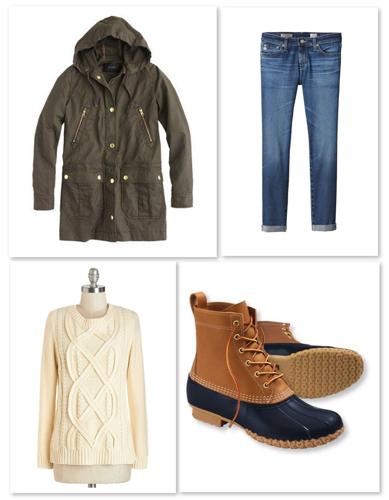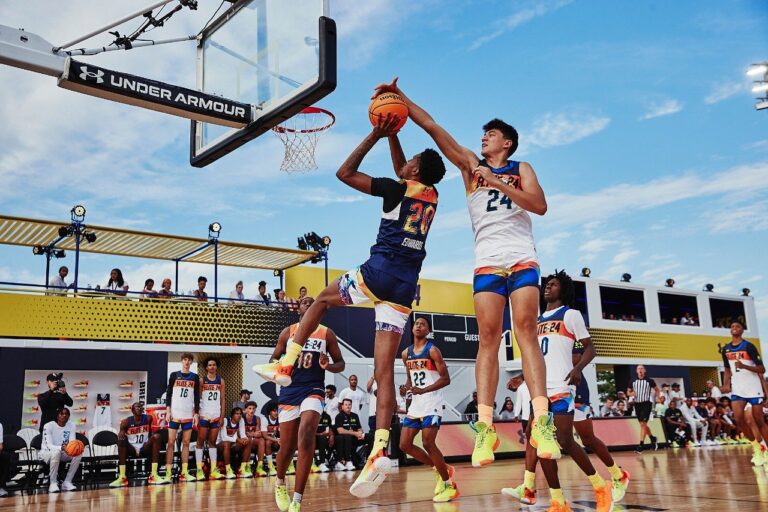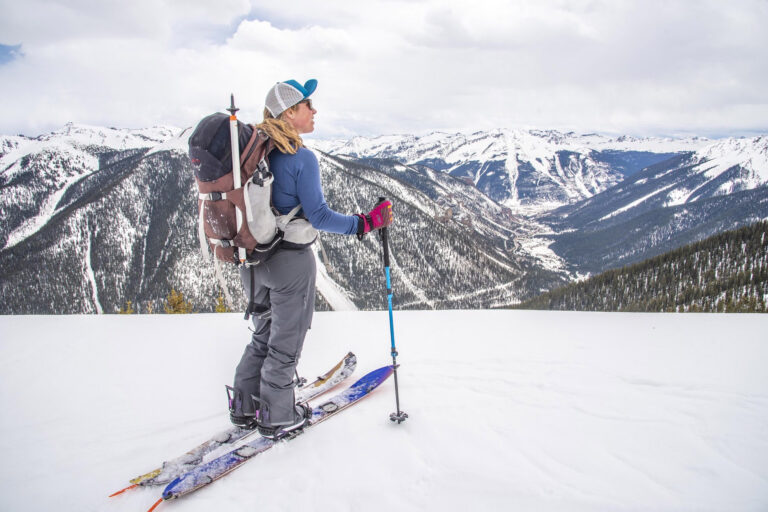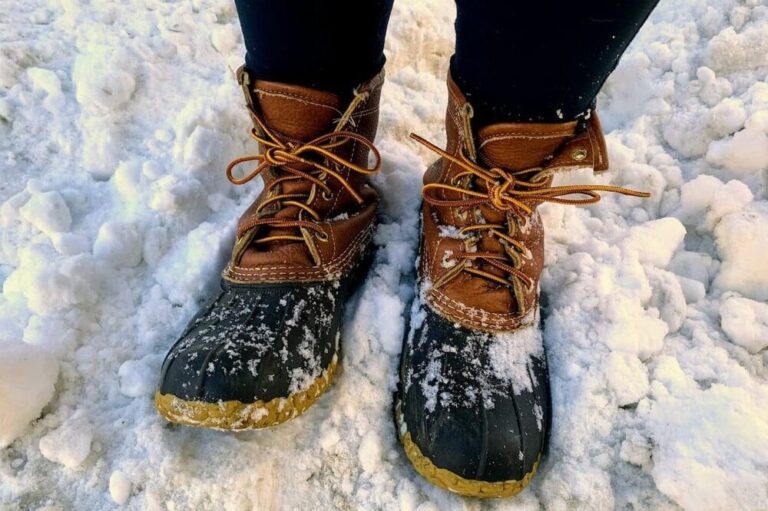To avoid discomfort and accidents, it’s important not to wear bulky or restrictive clothing while ice skating. When it comes to ice skating, what you wear can greatly impact your performance and safety on the ice.
The right attire allows for freedom of movement and protects you from the cold temperatures. However, there are certain things you should avoid wearing while ice skating. Bulky clothing, such as heavy coats or thick sweaters, can hinder your movement and make it harder to skate gracefully.
Restrictive clothing, like tight jeans or skirts, can limit your flexibility and make it difficult to perform jumps and spins. It’s also important to avoid wearing clothes that are too loose, as they can get caught in your skates and cause accidents. By choosing the right clothing for ice skating, you can enjoy a comfortable and enjoyable experience on the ice.
Choosing The Right Clothing
Ensure you dress appropriately for ice skating to avoid any uncomfortable or risky situations. Stay away from loose clothing, long scarves, and heavy jackets that may hinder movement or cause accidents on the ice. Opt for fitted, warm clothing that allows for easy movement on the rink.
Read Also: Ice Skating Date Clothing
Layering For Warmth And Flexibility
- Layering your clothing is essential for ice skating, as it allows you to adjust your outfit based on the changing temperatures and your activity level. Here are some tips for layering:
- Start with a lightweight, moisture-wicking base layer: This helps to keep your skin dry by wicking away sweat.
- Add a lightweight insulating layer: Look for materials like fleece or wool to provide warmth without adding bulk.
- Finish with a breathable outer layer: A waterproof and wind-resistant jacket will protect you from the elements while allowing excess heat to escape.
Avoiding Loose Or Bulky Clothing
- To skate comfortably and safely, it’s important to avoid wearing loose or bulky clothing, which can pose a risk of getting caught in the skates or hindering movement. Here are some things to remember:
- Opt for fitted clothing: Choose clothes that are snug but still allow for ease of movement.
- Avoid long scarves and loose accessories: These can easily get tangled in the skates or obstruct your view.
- Say no to oversized jackets or pants: Baggy clothing can restrict your movements and affect your balance on the ice.
Opting For Moisture-Wicking Materials
- When it comes to ice skating, you want to stay dry and comfortable throughout your time on the ice. Choosing moisture-wicking materials can help with this. Consider the following:
- Look for synthetic fabrics: Materials like polyester or nylon tend to have excellent moisture-wicking properties.
- Avoid cotton: Cotton tends to absorb and retain moisture, which can leave you feeling cold and uncomfortable on the ice.
- Check for breathability: Ensure that the clothing you choose allows adequate airflow to help evaporate sweat and keep you dry.
Remember, when selecting your ice skating attire, prioritize clothing that provides warmth, flexibility, and comfort. Layering is key, and be sure to avoid loose or bulky items that can interfere with your movements. Opt for moisture-wicking materials to stay dry and cozy while enjoying your time on the ice.
With the right clothing choices, you can glide through your skating adventure with ease and style.
Selecting The Proper Footwear
When it comes to ice skating, selecting the proper footwear is crucial. Avoid wearing inappropriate shoes that lack proper ankle support or have slippery soles, as they can increase the risk of accidents on the ice. Choose skates or suitable footwear designed specifically for ice skating to ensure safety and enjoy a smooth skating experience.
The Importance Of Insulated And Waterproof Boots
- Insulated and waterproof boots are crucial for ice skating, as they provide protection and comfort for your feet.
- Insulated boots help to keep your feet warm by trapping heat inside, preventing frostbite and discomfort.
- Waterproof boots are essential to keep your feet dry, as the ice surface can be wet and slippery.
- Opt for boots that have a thick layer of insulation and a waterproof outer layer to ensure maximum comfort and safety while skating.
Avoiding Heels And Open-Toed Shoes
- Heels are a big no-no when it comes to ice skating.
- Heels can throw off your balance and stability, making it harder to maintain control on the ice.
- Open-toed shoes expose your feet to potential injuries from falling ice or the sharp edges of other skates.
- It’s essential to opt for closed-toed shoes with a sturdy sole that provides proper support and protection for your feet.
Considering The Use Of Skate Guards
- Skate guards are a valuable accessory to consider when ice skating.
- They are designed to protect your blades from damage when walking on surfaces other than the ice.
- Skate guards are particularly useful when transitioning from the parking lot to the rink or during breaks.
- Remember to remove the guards before stepping onto the ice to ensure optimal performance and reduce the risk of accidents.
Accessorizing For Comfort And Safety
When ice skating, it’s important to avoid wearing clothing that can hinder your comfort and safety. Opt for warm, flexible layers and avoid loose or bulky items that could cause accidents on the ice.
Ice skating can be a thrilling and enjoyable activity, but it’s important to dress appropriately for comfort and safety. When it comes to accessorizing, there are a few key items to consider. This article will explore three essential accessories that will help you stay warm, protected, and have a great time on the ice.
Wearing Gloves Or Mittens For Warmth:
- Keep your hands cozy and warm by wearing gloves or mittens.
- It is crucial to protect your fingers from the biting cold.
- Opt for insulated gloves or mittens that are waterproof and windproof.
- Ensure that they have a good grip to help you maintain control while skating.
Choosing A Helmet For Added Protection:
- Protect your head from potential falls or collisions by wearing a helmet.
- Look for helmets specifically designed for ice sports, as they offer enhanced protection.
- Ensure that the helmet fits snugly and covers the entire head, including the temples and the back.
- Check for certifications such as ASTM (American Society for Testing and Materials) or CE (Conformité Européene) to ensure the helmet meets safety standards.
Using Sunglasses Or Goggles To Shield The Eyes:
- Shield your eyes from the bright sun or glaring ice with sunglasses or goggles.
- Polarized sunglasses can reduce glare and improve visibility.
- Goggles provide better protection against cold winds and potential ice debris.
- Look for sunglasses or goggles that offer UV protection to safeguard your eyes from harmful rays.
Accessorizing with gloves or mittens, a helmet, and sunglasses or goggles will not only keep you comfortable but also prioritize your safety while ice skating. Remember, choosing the right gear can make all the difference in ensuring an enjoyable and injury-free experience.
Stay warm, protected, and have a blast on the ice!
Ensuring Proper Fit And Size
When it comes to ice skating, ensuring the proper fit and size of your clothing is crucial. Avoid wearing clothes that are too tight or too loose, as they can hinder your movement and affect your performance on the ice.
Take the time to find clothes that fit well and allow for comfortable movement, so you can enjoy your skating experience to the fullest.
Ice skating is a popular winter activity that requires the right clothing and gear for a comfortable and enjoyable experience. When hitting the ice, it’s crucial to avoid clothing that is too tight or restrictive, and to ensure that your skates are the right size for a secure fit.
By following these tips, you can stay warm, move freely, and have a fantastic time on the ice. Let’s dive into the details:
Avoiding Clothing That Is Too Tight Or Restrictive:
- Opt for clothing that allows for easy movement: Tight or restrictive clothing can impede your ability to skate comfortably. Choose clothing that is loose enough to allow for a full range of motion, especially in the arms and legs.
- Avoid jeans or thick pants: Jeans and thick pants can restrict movement and become uncomfortable when wet. Instead, opt for stretchy leggings or athletic pants that provide flexibility and warmth.
- Dress in layers: Layering is key to staying warm and adjusting your clothing as needed. Start with a moisture-wicking base layer, add an insulating middle layer, and top it off with a breathable outer layer.
- Choose the right socks: Opt for thin, moisture-wicking socks that prevent your feet from getting too sweaty or cold inside the skates. Avoid thick or bulky socks that can make your skates feel tight or uncomfortable.
Selecting The Right Size Skates For A Secure Fit:
- Get your feet measured: Before purchasing or renting skates, have your feet professionally measured to determine your correct size. Remember that skate sizes may differ from regular shoe sizes, so don’t rely on guesswork.
- Consider the type of skate: Figure skates and hockey skates have different designs and fits. Make sure to choose the appropriate type for your skating activity.
- Check for proper fit and support: When trying on skates, ensure that your toes have wiggle room and that your heels are snugly secured. Your skates should provide ankle support without cutting off circulation or causing pain.
- Lace them up properly: Correctly lacing up your skates is crucial for a secure fit. Start from the bottom and work your way up, tightening each set of eyelets evenly. Avoid lacing them too tightly, as this can restrict blood flow and cause discomfort.
Adjusting Clothing And Accessories As Needed:
- Wear gloves or mittens: Protect your hands from the cold and potential falls by wearing gloves or mittens. Opt for ones that allow for flexibility and grip while holding onto the skate’s laces or handrails.
- Secure loose clothing and accessories: Double-check that scarves, hats, or any loose ends are securely tucked in to prevent them from getting caught in the skates or other equipment.
- Wear a helmet for safety: While not always mandatory, wearing a helmet is a good idea, especially for beginners or those practicing jumps and tricks. Ensure that the helmet fits properly and snugly to provide optimal protection.
By adhering to these guidelines, you can ensure that your ice skating experience is not hindered by ill-fitting clothing or skates. Stay comfortable, warm, and safe on the ice, and remember to have fun!
Tips For Dressing Kids For Ice Skating
When ice skating with kids, it’s important to avoid clothing that can restrict movement or cause discomfort. Opt for warm, layered clothing, tight-fitting gloves, and sturdy boots to ensure a safe and enjoyable experience on the ice.
The Importance Of Warmth And Mobility For Children
- Dressing children appropriately for ice skating is crucial to ensure their comfort and safety on the ice. Here are some important points to consider:
- Layering is key: Encourage your little skaters to wear multiple layers to trap heat and provide insulation. This allows them to adjust their clothing according to their comfort level as they warm up during activity.
- Start with a moisture-wicking base layer: A moisture-wicking fabric helps to keep sweat away from the skin, preventing the body from feeling clammy and cold. Look for items made from materials like polyester or merino wool.
- Insulating mid-layer: Opt for a cozy, insulating mid-layer like a fleece sweater or a thin down jacket. This layer will help to retain body heat and provide extra warmth.
- Waterproof outer layer: To protect your child from getting wet and cold, make sure to provide them with a waterproof and wind-resistant outer layer, such as a snowsuit or a waterproof jacket and pants.
- Comfortable and flexible clothing: Choose clothing that allows for ease of movement, such as stretchy pants or leggings. Avoid bulky or restrictive clothing that may hinder your child’s ability to skate and even increase the risk of accidents.
Choosing Clothing And Accessories Appropriate For Their Age
- When it comes to dressing kids for ice skating, it’s essential to take their age into consideration. Here are some tips to help you choose the most suitable clothing and accessories:
- Helmets: For young children and beginners, wearing a helmet is highly recommended to ensure their safety. Look for helmets specifically designed for ice skating or winter sports.
- Gloves or mittens: Cold hands can quickly ruin the ice skating experience for kids. Make sure they wear gloves or mittens to keep their hands warm. Opt for waterproof options to protect against melting ice.
- Thick socks and well-fitting skates: Proper foot protection is essential to keep your child comfortable and prevent blisters. Choose thick, warm socks without seams, and ensure that their skates fit properly to avoid discomfort.
- Avoid scarves and loose items: It’s best to avoid scarves, as they can become tangled or caught in skates. Opt for a neck warmer or a turtleneck instead. Also, make sure your child doesn’t wear loose items like long skirts or dangling accessories that may pose a safety risk.
Safety Measures To Consider For Young Skaters
- Safety should always be a top priority when it comes to ice skating, especially for young children. Here are some safety measures to keep in mind:
- Properly fitted helmets: Ensure that your child’s helmet is the correct size and properly adjusted to provide optimal protection. It should sit securely on their head, covering the forehead and not obstructing their vision.
- Knee and elbow pads: If your child is just starting to learn how to skate, consider providing them with knee and elbow pads to cushion any potential falls or impacts.
- Supervision and instruction: Young children should always be accompanied by a responsible adult while skating. Consider enrolling them in skating lessons to learn proper techniques and minimize the risk of accidents.
- Familiarize with the rink rules: Teach your child about the rules and etiquette of the ice skating rink, such as not skating against the flow, avoiding sudden stops, and being aware of other skaters around them.
- Stay in designated areas: Encourage your child to skate only in designated areas and avoid venturing onto the center of the rink where more experienced skaters may be practicing complicated moves.
Remember, dressing your child appropriately for ice skating not only ensures their comfort but also plays a vital role in their safety on the ice. By adhering to these tips, you can make their ice skating experience enjoyable and worry-free.
Dressing For Different Ice Skating Activities
When dressing for different ice skating activities, it’s important to know what not to wear. Avoid clothing that restricts movement, such as tight jeans or skirts, and opt for warm and comfortable layers to stay protected on the ice. Choose appropriate footwear, like supportive boots, to ensure stability and prevent accidents.
Ice skating is an exhilarating activity that requires appropriate attire for different types of sessions. Whether you’re hitting the ice for a casual skating session, performing impressive figure skating routines, or participating in fast-paced ice hockey games, dressing appropriately can make your experience smoother and more enjoyable.
Keep reading to discover what not to wear for each ice skating activity:
Casual Skating Sessions
For casual skating sessions, comfort and flexibility are key. Here’s what you should avoid wearing:
- Jeans: Their thick material restricts movement and can become heavy when wet.
- Bulky sweaters: Opt for lighter layers to prevent overheating while gliding across the ice.
- Long coats or jackets: They can impede your ability to move freely and get in the way of your balance.
- Scarves: While fashionable, scarves pose a safety risk as they may get tangled in your skates or affect your balance.
- Loose or oversized clothing: These can easily get caught on skating equipment or other skaters.
Instead, choose garments that allow for a wide range of motion and keep you comfortable, such as:
- Leggings or athletic pants: These provide flexibility and freedom of movement.
- Thin, breathable layers: Opt for lightweight jackets or sweatshirts made of moisture-wicking materials.
- Gloves or mittens: Protect your hands from the cold and reduce your risk of possible injuries.
- Warm socks: Ensure your feet stay cozy and comfortable in your skates.
Figure Skating Performances
Figure skating performances demand elegance and poise. Pay attention to the following fashion pitfalls to avoid on the ice:
- Baggy or loose clothing: Tight-fitting attire allows judges and spectators to better appreciate your graceful movements.
- Distracting patterns: Bold prints or bright colors can divert attention from your performance.
- Bulky accessories: Jewelry or accessories that may come loose during your routine should be left off the ice.
- Unsupportive footwear: Ensure your skates fit snugly and provide the necessary support for demanding routines.
When dressing for figure skating performances, aim for:
- Figure-hugging dresses or skirts: These highlight your body movements and lines.
- Neutral or pastel colors: Choose colors that complement your complexion and showcase your elegance.
- Simple, elegant hairstyles: Opt for sleek buns or ponytails to keep your hair out of your face while performing.
- Minimalistic jewelry: Small, understated pieces can add a touch of sparkle without distracting from your routine.
Ice Hockey Games
Ice hockey is a fast-paced and physical sport that requires specific attire to ensure safety and ease of movement. Here are some clothing items to avoid when gearing up for an ice hockey game:
- Loose-fitting clothing: Loose clothes can get caught on equipment or pose a risk while battling for the puck.
- Non-protective gear: Using improper equipment can increase the risk of injury during intense gameplay.
- Fashion sneakers: Regular sneakers lack ankle support and stability needed for the dynamic maneuvers in hockey.
Instead, focus on wearing the right gear for ice hockey games:
- Protective equipment: Invest in a helmet with a face cage, shoulder pads, elbow pads, gloves, knee pads, and shin guards.
- Hockey jersey: Wear your team’s jersey or a comfortable, breathable sports jersey.
- Hockey socks: These specialized socks are designed to fit over your shin guards and keep them in place.
- Hockey skates: Opt for skates specifically designed for ice hockey that provide proper ankle support and stability.
Remember, dressing appropriately for different ice skating activities ensures you can skate comfortably, safely, and with confidence. So, choose the right attire and get ready to glide, spin, or compete on the ice!
Styling Tips For A Fashionable Ice Skating Outfit
Discover essential styling tips to create a fashionable ice skating outfit. Learn what not to wear to ensure comfort, functionality, and style on the ice.
When it comes to ice skating, not only is it important to stay warm and comfortable, but it’s also a great opportunity to showcase your personal style. Whether you’re a seasoned skater or just starting out, here are some styling tips to help you create a fashionable ice skating outfit that will turn heads on the rink.
Incorporating Trendy Winter Accessories:
- Fuzzy earmuffs: Keep your ears warm and add a touch of whimsy to your outfit with a pair of cozy earmuffs.
- Knitted beanie: Stay snug and stylish with a trendy knitted beanie that can be worn pulled down over your ears or slightly slouched.
- Patterned scarf: Amp up your winter look with a patterned scarf that adds a pop of color and warmth to your ensemble.
- Fingerless gloves: Stay toasty while still maintaining dexterity on the ice with fingerless gloves that allow for easy finger movement.
Selecting Coordinating Colors And Patterns:
- Monochromatic look: Opt for a sleek and polished look by choosing ice skating attire in shades of the same color. This creates a cohesive outfit that exudes elegance.
- Playful patterns: Inject some fun into your ice skating outfit with bold patterns like stripes, polka dots, or even fun winter-themed prints. Just make sure not to go overboard with too many clashing patterns.
- Complementary colors: Experiment with color combinations that complement each other, such as pairing warm hues like burgundy and mustard, or cool tones like blue and silver. This adds visual interest to your outfit.
Showcasing Personal Style While Maintaining Functionality:
- Layering: Stay warm and adapt to changing temperatures by layering your ice skating outfit. Start with a thermal base layer, add a cozy sweater or hoodie, and finish with a waterproof and windproof outer layer to protect against the elements.
- Leggings or tights: Opt for thick, opaque leggings or tights that provide warmth and allow for ease of movement. Pair them with skirts or dresses for a feminine touch.
- Sneakers or ankle boots: Choose footwear that offers good ankle support and comfortable cushioning for long hours on the ice. Opt for sneakers or ankle boots with a good grip to prevent any accidental slips.
Remember, the key to a fashionable ice skating outfit is to strike a balance between style and functionality. By incorporating trendy winter accessories, selecting coordinating colors and patterns, and showcasing your personal style, you can create an ensemble that not only looks good but also keeps you comfortable and ready to glide effortlessly on the ice.
So, step onto the rink with confidence and let your ice skating outfit reflect your unique fashion sense.
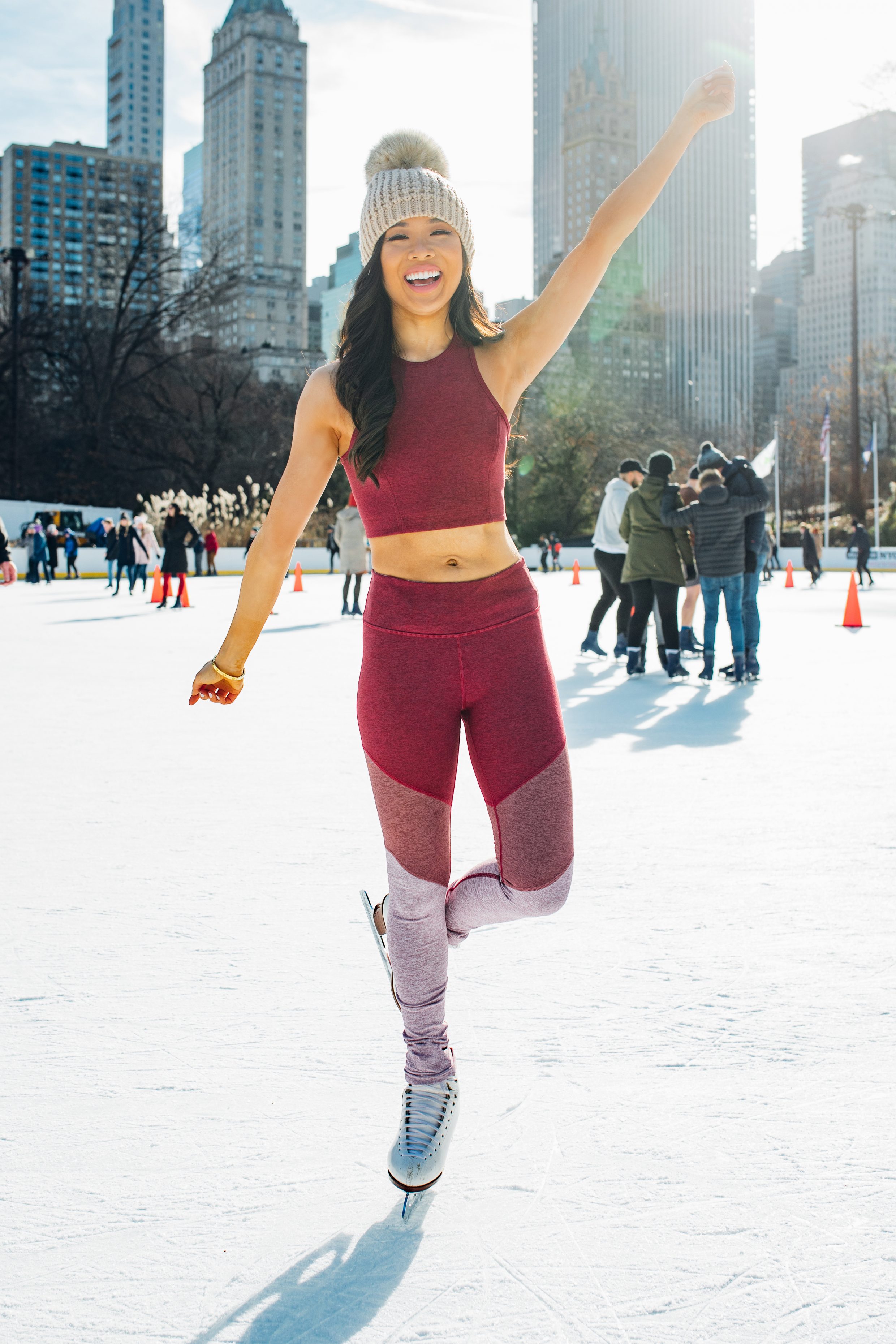
Credit: colorandchic.com
Do’S And Don’Ts Of Ice Skating Attire
When it comes to ice skating attire, there are certain things you should avoid wearing. Stay away from loose or restrictive clothing, jeans, and bulky jackets that can hinder movement and affect your balance on the ice. Opt for well-fitted, flexible clothing and appropriate footwear to ensure a comfortable and safe skating experience.
Ice Skating Attire: Do’S And Don’Ts
Ice skating can be a fun and exhilarating activity, but it’s important to dress appropriately to ensure your safety and comfort. Here are some essential do’s and don’ts of ice skating attire to keep in mind:
Do Wear Proper Undergarments:
- Layering is key when it comes to ice skating attire, so make sure to wear thermal undergarments to keep you warm on the ice.
- Opt for moisture-wicking materials to keep yourself dry and comfortable throughout your skating session.
Don’T Wear Long Scarves Or Loose Clothing That Can Get Caught In Skates:
- Long scarves, loose jackets, or any hanging clothing can pose a serious safety hazard when ice skating.
- Stay away from clothing with dangling strings, as they can easily get tangled in your skates and cause you to lose balance or even fall.
Do Bring A Change Of Clothes For After Skating:
- Ice skating can be a sweaty activity, so it’s a good idea to bring a change of clothes to put on once you’re done skating.
- Wearing dry clothes after skating will help you stay warm and prevent any discomfort caused by damp clothing.
Don’T Wear Excessive Jewelry Or Accessories That May Hinder Movement:
- While you may want to add a touch of personal style to your ice skating outfit, it’s important to avoid wearing excessive jewelry or accessories that may hinder your movement.
- Avoid long necklaces, large earrings, or bracelets that can potentially get caught in your skates or obstruct your range of motion.
Remember, when it comes to ice skating attire, prioritizing safety and comfort should be your main focus. By following these do’s and don’ts, you’ll be ready to hit the ice with confidence, enjoying your skating experience to the fullest. So gear up appropriately, be cautious, and have a great time gliding on the ice!
Useful Tips For All Skill Levels
Discover essential tips for all skill levels when it comes to what not to wear ice skating. From avoiding loose clothing to selecting supportive footwear, these practical suggestions will help you skate with style and safety, whether you’re a beginner or seasoned pro.
Beginner Skaters: Focus On Warmth And Comfort
Ice skating is an exhilarating sport that can be enjoyed by beginners and experts alike. When it comes to gearing up for your time on the ice, it’s important to consider your attire. For beginner skaters, the focus should be on staying warm and comfortable.
Here are some useful tips to help you make the right choices:
- Layer up: Wear multiple layers of clothing to trap heat and provide insulation. Start with a moisture-wicking base layer to keep sweat away from your skin, add a cozy fleece or thermal top for warmth, and finish off with a waterproof outer shell to protect against the cold and wet ice.
- Protect your extremities: Don’t forget to keep your hands, feet, and head warm. Invest in a good pair of insulated gloves or mittens, wear thick wool or thermal socks, and don’t leave home without a snug-fitting hat or beanie to prevent heat loss.
- Choose the right pants: Opt for comfortable and flexible pants that allow for a wide range of movement. Avoid jeans or bulky trousers that can restrict your mobility and hinder your skating performance. Leggings, yoga pants, or thermal tights are great alternatives.
- Invest in quality footwear: It’s crucial to wear appropriate ice skates that fit well and offer proper ankle support. Beginner skaters should consider renting skates from the rink or purchasing entry-level models to ensure comfort and stability on the ice.
Intermediate Skaters: Consider Adding Stylish Elements To Your Attire
As you progress in your ice skating skills, it’s natural to start thinking about adding a touch of style to your skating outfit. While warmth and comfort should still be a priority, you can also incorporate some fashionable elements into your attire.
Here are some tips for intermediate skaters looking to up their style game:
- Accessorize wisely: Add a pop of color or pattern with vibrant scarves, gloves, or hats. Not only will these accessories keep you warm, but they will also help you stand out on the ice and express your personal style.
- Try fitted tops: Instead of bulky layers, opt for well-fitted tops that not only provide comfort but also enhance your silhouette. Look for thermal tops with flattering cuts or stylish figure-hugging sweaters.
- Style your hair: Don’t underestimate the power of a well-styled hairdo. Experiment with different hairstyles that keep your hair away from your face and add elegance to your overall look. Braids, buns, or ponytails can all be chic and practical options.
- Choose trendy leggings: Ditch plain black leggings and venture into exciting patterns and prints. Experiment with fun textures and colors to add a trendy touch to your skating ensemble.
Advanced Skaters: Optimize Your Outfit For Performance And Style
For advanced skaters, the focus shifts to balancing performance and style. As you master intricate moves and jumps, your outfit should not only help you perform at your best but also exude confidence and style. Here’s how to optimize your skating outfit:
- Invest in high-quality gear: Look for advanced ice skates that provide maximum support, responsiveness, and durability. Choose boots with stiff soles and blades that suit your specific skating style.
- Streamline your clothing: Opt for form-fitting attire that enhances your body shape and allows for fluid movement. Look for performance-oriented fabrics that wick moisture away from your body and provide excellent stretch and breathability.
- Experiment with fashion-forward designs: Advanced skaters can go beyond basic colors and explore avant-garde designs, unique textures, and attention-grabbing details. Don’t be afraid to embrace bold patterns or asymmetric cuts that make a fashion statement on the ice.
- Accessorize strategically: Consider using accessories to accentuate your performance and add a touch of elegance. Delicate gloves, trendy leg warmers, or statement-making jewelry can enhance your overall look without compromising your skating ability.
Now that you have these useful tips for ice skating attire at different skill levels, you can hit the ice in style while ensuring comfort, performance, and confidence. So, gear up and get ready for an unforgettable skating experience!
Frequently Asked Questions For What Not To Wear Ice Skating
What Should I Wear For Ice Skating?
For ice skating, it is recommended to wear warm and comfortable clothing, like layers of sweaters and a thick jacket. Don’t forget to wear a pair of thick socks and gloves to keep your hands and feet warm. It’s important to wear proper ice skating shoes for safety and balance.
Can I Wear Jeans Ice Skating?
While you can wear jeans ice skating, it is not recommended as they restrict movement and can hinder your skating experience. It’s best to wear clothing made of flexible and insulating material that allows you to move freely on the ice.
Consider wearing thermal leggings or athletic pants instead for better comfort and mobility.
Do I Need Special Shoes For Ice Skating?
Yes, it’s important to wear special shoes designed for ice skating. These ice skates provide ankle support and have a blade at the bottom to glide smoothly on the ice. Rental skates are available at most ice skating rinks for beginners.
Proper fitting skates are essential for a comfortable and safe ice skating experience.
Conclusion
To ensure a comfortable and safe ice skating experience, it is crucial to dress appropriately. By following the tips mentioned in this blog post, you can avoid fashion faux pas and focus on enjoying your time on the ice. Remember to wear layers to stay warm and flexible, and opt for moisture-wicking materials to keep dry.
Avoid loose items of clothing and ensure your pants or leggings are flexible enough for movement. Take care of your feet by wearing thick socks and well-fitted boots that provide support. And finally, don’t forget to protect your head and hands with a helmet and gloves.
By adhering to these guidelines, you can fully embrace the joy of ice skating while looking stylish and staying safe. So next time you hit the rink, remember what not to wear and glide with confidence!

